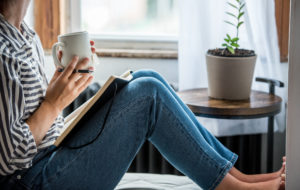
Want to improve your practice’s preparation for inspection day and beyond?
Your step-by-step guide to CQC Inspection – now including ready to use tools, checklists and templates!
What makes the Dental CQC Inspection Certificate different?
- Our easy-to-use online system will let you work through the training at your own pace
- Hear from our wide range of experts from consultants to lawyers specialising in dental practice inspections
- Access to a wide range of tools, templates and checklists that you can download and start using in your practice straight away
- Receive a specialist certificate at the end of your course to demonstrate your learning and preparation
The course provides guidance on the current regulatory model, however with the CQC recently launching their new strategy and aiming to be regulating differently, it also looks at the key changes and their motivations, future implications and how to prepare.
The course will be updated to reflect new policy frameworks, guidance and ways of working once these have been developed by the CQC over the coming year.
With a year’s access to the course you will receive these updates as they happen!
9 full modules
35+ videos
Downloadable tools, checklists and templates for CQC Inspections
Hide Info
Learning Objectives
- Understand your regulatory requirements
- Ready-to-use templates, checklists and tools for your practice
- Understand how inspectors judge your practice on the 5 key questions
- Achieve the outcome your dental practice deserves
The course includes a module looking at the new strategy, implications for providers, and how to prepare.
The course will be updated with new policy frameworks and guidance once these have been developed by the CQC over time.
You have a year to complete the course so you will receive these updates as part of the course!
Agenda
- Module 1:
Legislation, guidance and ethical issues
- National Institute for Health and Care Excellence (NICE) guidance
- Record keeping – NHS, CQC and GDC requirements
- The impact of GDPR on your practice
- Changes to CQC inspections
- Common areas of inspection failure
- Module 2:
Is your service safe?
- The safe recruitment of staff
- Ensuring staff are fit and proper for their role
- Safeguarding children and young people
- Safeguarding vulnerable adults
- What are inspectors looking for?
- Implementing safeguarding processes and records
- Whistle-blowing policies and procedures
- MCA and DoLS and the proposed Liberty Protection Safeguards
- Reporting concerns
- Prevention and control of infection
- Identifying areas for improvement – ready to use audit checklists, improvement plans, evidence checklists
- Identifying risks and mitigating them
- Module 3:
Is your service effective?
- Assessing patient needs to deliver appropriate treatment
- Auditing and monitoring outcomes
- Record keeping – what’s required?
- Adapting and designing premises to meet needs
- Gaining informed consent to treatment
- Implementing quality assurance
- Identifying areas for improvement – audit checklist, improvement plan, evidence checklist
- Module 4:
Is your service caring?
- Treating people with compassion, kindness, dignity and respect
- Confidentiality for patients
- Involving patients in decisions about their treatment
- Supporting patients with the treatment
- Informing patients of proposed treatment, costs, benefits and risks
- Providing a caring environment
- Creating a culture of compassionate care
- How will inspectors judge the care you provide? – audit checklist, improvement plan, evidence checklist
- Module 5:
Is your service responsive to people’s needs?
- Is your service meeting the needs of its users?
- Planning and delivering services to meet people’s needs
- Successful complaints handling
- Treatment plans – examples and templates
- Taking account of the needs of different people
- Procedures and policies for responding to complaints and concerns
- Patient feedback
- Identifying areas for improvement – audit checklist, improvement plan, evidence checklist
- Module 6:
Is your service well-led?
- Developing a vision and strategy
- Engaging and involving people
- Leadership and culture
- Using quality assurance to encourage continuous improvement
- Auditing your provision to drive improvement
- Gaining feedback from staff and the people who use services
- Developing an agenda for improvement
- Introducing change for improvement
- Implementing effective policies and procedures
- Ensuring continuous improvement and sustainability
- Demonstrating effective leadership to inspectors – audit checklist, improvement plan, evidence checklist
- Carrying out performance management and supervision
- Clinical audits to monitor quality of services
- Providing robust staff training and development
- Module 7:
Preparing for and managing inspection day
- Data collection and analysis
- What documents do you need to prepare – a checklist for the day
- Training your staff for inspections
- Introducing the day with a presentation
- Planning your day
- Who should be available?
- Conduct of inspectors
- Requesting feedback
- The draft report
- Challenging an inspection report
- Module 8:
Gaining staff buy-in to CQC compliance
- Staff awareness of responsibilities
- Building trust in the team
- Resolving conflict and procedures involved
- Holding staff to account
- Gaining commitment
- Getting the fine level of detail
- Gaining staff buy-in to CQC compliance
- Module 9:
The CQC's strategy
- Key changes and motivations
- Next steps for the development of new policy frameworks
- How to prepare
Related Products
-

- Dentistry
- Distance Learning
Advanced Mental Health in The Workplace First Aider: Virtual toolkit
-

- Charities
- Dentistry
HR for the Non-HR Manager: Virtual toolkit
-

- Distance Learning
- Distance Learning
GP CQC Inspection: Virtual toolkit
-

- Distance Learning
- Health & Social Care
Infection Prevention and Control: Virtual toolkit

